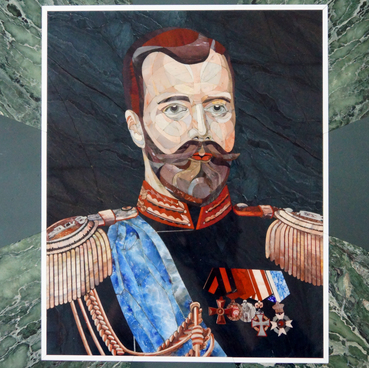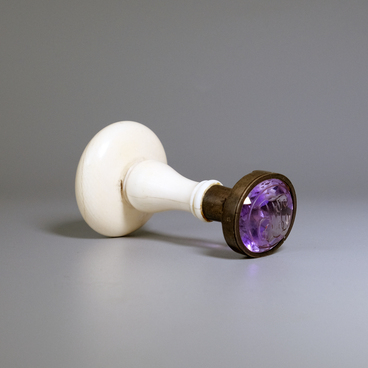The Yekaterinburg Imperial Lapidary Factory was the first state-owned stone-cutting enterprise in Russia. Before that, only private craftsmen in Yekaterinburg and its suburbs were engaged in this craft. The factory opened in December 1751 and was run by the Cabinet of His Imperial Majesty, a court institution that was in charge of the personal property of the Russian Imperial family.
From 1782, carved stone bowls and vases were main products of the factory. They were commissioned for both the monarch’s palaces and mansions of the local and St. Petersburg aristocrats. At the beginning of the 19th century, the company was headed by Count Alexander Stroganov, the president of the Academy of Arts. Thanks to him, the Ural school of stone-cutting art was in its heyday.
In the 19th century, the Lapidary Factory mainly worked to fulfill the orders of the imperial palace. It produced the facing for the famous Malachite Room of the Winter Palace, stone pedestals for the products of the Imperial Porcelain Factory, decorative statuettes, jewelry boxes, and other items.
The sketch album from the collection of the Museum of Stone-Cutting and Jewelry Art History dates back to the turn of the 19th century. It is a valuable historical monument, and a document by which contemporary art historians can determine who, where, and when made a specific item. Artist V. E. Dmitriyev made most of the drawings. They were exact copies of the drawings that were sent to the factory from Yekaterinburg.
On one of the pages of the album is a cigarette case and cufflinks made of rhodonite with the monogram of Alexander III. This set was made for the emperor by Ekaterinburg carvers in 1891. The stone for both pieces was of the “most scarlet color”, with no dark spots or veins. The frame and gold clasps were made by jeweler Eric Collin, who was chief craftsman in the firm of Karl Fabergé until 1886. The cigarette case and cufflinks were kept in the office of Emperor Alexander III in the Gatchina Palace and now are part of the collection of the Moscow Kremlin Museums.
From 1782, carved stone bowls and vases were main products of the factory. They were commissioned for both the monarch’s palaces and mansions of the local and St. Petersburg aristocrats. At the beginning of the 19th century, the company was headed by Count Alexander Stroganov, the president of the Academy of Arts. Thanks to him, the Ural school of stone-cutting art was in its heyday.
In the 19th century, the Lapidary Factory mainly worked to fulfill the orders of the imperial palace. It produced the facing for the famous Malachite Room of the Winter Palace, stone pedestals for the products of the Imperial Porcelain Factory, decorative statuettes, jewelry boxes, and other items.
The sketch album from the collection of the Museum of Stone-Cutting and Jewelry Art History dates back to the turn of the 19th century. It is a valuable historical monument, and a document by which contemporary art historians can determine who, where, and when made a specific item. Artist V. E. Dmitriyev made most of the drawings. They were exact copies of the drawings that were sent to the factory from Yekaterinburg.
On one of the pages of the album is a cigarette case and cufflinks made of rhodonite with the monogram of Alexander III. This set was made for the emperor by Ekaterinburg carvers in 1891. The stone for both pieces was of the “most scarlet color”, with no dark spots or veins. The frame and gold clasps were made by jeweler Eric Collin, who was chief craftsman in the firm of Karl Fabergé until 1886. The cigarette case and cufflinks were kept in the office of Emperor Alexander III in the Gatchina Palace and now are part of the collection of the Moscow Kremlin Museums.

